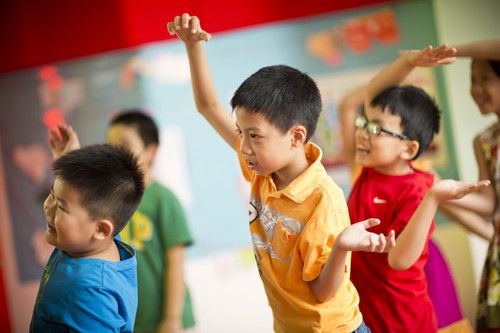Teaching Methods: TPR vs. Suggestopedia
Hi there! Today, let's dive into two amazing approaches: Total Physical Response (TPR) and Suggestopedia. These methods offer unique insights into how we can optimize the language learning process for all students.
Total Physical Response (TPR) Method:
It emphasizes the use of physical movement and action to facilitate learning. Developed by Dr. James Asher in the 1960s, TPR is based on the premise that language learning is most effective when it mimics the natural process of acquiring a first language.
Key principles:
Use of Commands: Teachers give commands in the target language, and students respond physically to demonstrate their understanding.
Response through Actions: Students respond to commands by performing physical actions rather than speaking.
Non-Verbal Communication: TPR relies heavily on non-verbal communication, allowing learners to understand language through gestures, movements, and context.
Stress-Free Environment: TPR creates a low-anxiety environment where students can learn at their own pace and feel comfortable experimenting with language.
Repetition and Reinforcement: Concepts are reinforced through repetition and the integration of new vocabulary and grammar structures into subsequent commands and actions.
Engagement and Participation: TPR encourages active participation and engagement from students, fostering a dynamic learning environment.
Overall, TPR is particularly effective for beginners and young learners, as it leverages kinesthetic learning and engages multiple senses in the language learning process.
Suggestopedia Method:

Suggestopedia is a teaching method developed by Bulgarian psychologist Georgi Lozanov in the 1970s. It aims to create a relaxed and positive learning environment to accelerate the process of learning.
Summary:
Positive Atmosphere: Suggestopedia emphasizes creating a comfortable and positive atmosphere for learning. This includes elements such as comfortable seating, soft lighting, and relaxing music, which help reduce anxiety and facilitate learning.
Suggestion: The method relies on the power of suggestion to enhance learning. Teachers use suggestive techniques such as using confident language, positive reinforcement, and encouraging students to believe in their ability to learn quickly and effectively.
Learner-Centered Approach: Suggestopedia focuses on the needs and interests of learners. Lessons are designed to be dynamic and engaging, incorporating a variety of activities such as games, role-plays, and music to cater to different learning styles.
Use of Rich Content: This includes using authentic materials such as literature, music, and art to expose learners to the target language in meaningful ways.
Integration of Relaxation: The method integrates relaxation techniques to help students access their subconscious mind and enhance learning.
Focus on Whole-Brain Learning: Suggestopedia seeks to engage both hemispheres of the brain by incorporating activities that stimulate logical, analytical thinking as well as creative, intuitive processing.
Role of the Teacher: Teachers in the Suggestopedia method act as facilitators rather than instructors, guiding students through the learning process and creating a supportive environment for exploration and discovery.
Overall, Suggestopedia aims to create an optimal learning environment that promotes rapid acquisition and retention of knowledge in a relaxed and enjoyable manner.
Conclusion: Exploring the Possibilities
In the realm of language teaching, innovation knows no bounds. Whether you're drawn to the dynamic, action-oriented approach of TPR or the serene, suggestion-rich environment of Suggestopedia, both methods offer valuable insights into effective language instruction.
That would be all, thanks for your attention.💅




Comentarios
Publicar un comentario